
KeithB
-
Posts
70 -
Joined
-
Last visited
Content Type
Profiles
Forums
Blogs
Gallery
Events
Store
Posts posted by KeithB
-
-
It is hard to tell from the picture whether the stars are applied or embroidered. Were there any other differences between the insignia of corporals and lieutenants other than the material of the stars? The family references to him are somewhat vague three generations later: "member of the military postal service for many years".
I usually have a bit of trouble extracting some of the details and color information from B&W photos but in this case I think I have seen enough of these so that I would agree with hunyadi that they are the corporal's stars. The officer's stars usually appear a bit more 'fuzzy' for lack of a better word, and in my experience always photograph with a distinctly grayish hue.
0 -
I notice NO indication of charges being brought under the imbecilic "Stolen Valor Act" despite his thereby-chargeable claims to having a Purple Heart. THAT might get the "wrong people" looking a lot more vigorously at members of Congress who have made careers sailing under equally false colors.
Even though he has only now been charged, all this occured in 2005 before the Stolen Valor Act became law.
0 -
Are the artillery guys German or French? The Kepi's they are wearing look a lot like the 1880 - 1910 uniformed French troops. Can anyone place the Artillery piece or the kason?
The gun looks very much like the Mle 1897 75mm field gun (aka the 'French 75').
0 -
any idea where exactly the word train comes from?
I understood it could be a word for a suply-trailer from a train or a word for the personel such as chefs,bakers etc.
but have no clue what it means exaclty.
'train' from The Online Etymology Dictionary
train (n.)
c.1330, "a drawing out, delay," later "trailing part of a skirt" (c.1440), also "retinue, procession" (c.1440), from O.Fr. train (fem. traine), from trainer "to pull, draw," from V.L. *traginare, extended from *tragere "to pull," back formation from tractus, pp. of L. trahere "to pull, draw" (see tract (1)). Train of thought first attested 1651. The railroad sense is recorded from 1824, from notion of a "train" of carriages. British train-spotting "hobby of observing trains and recording locomotive numbers" is recorded from 1958.
where there bavarian train abteilung troops?The following image is from 'Das Deutsches Heer'. According to it there were 3 Bavarian Train-Abteilungen. They are listed as Train-Bataillone. According to the book their name was changed in 1914 from Train-Bataillone to Train-Atteilungen. The same book has a drawing next the plate of the Prussian Train-Abteilungen of a uniform for a Military Baker, which has yellow shoulder straps with Roman Numerals (though the uniform still uses the light blue facing color) so Bakers were apparently not directly part of the Train-Abteilungen.
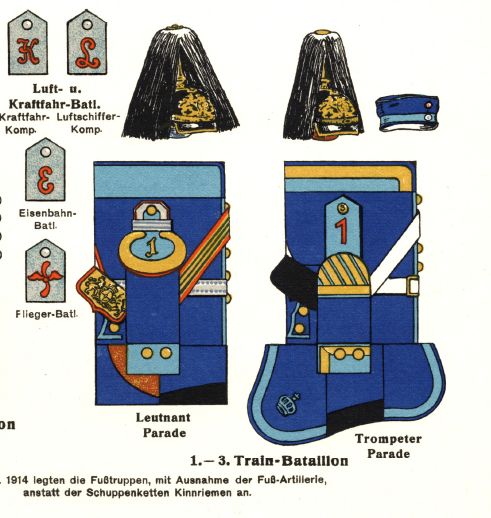
 0
0 -
I am not your expert, but since nobody else has answered and this has been rattling around in my head for several days I thought I would respond.
It is my understanding that after WWI the number of Hungarians who might have wanted to be in the armed forces was much greater than the number of available positions. It is also my understanding that the armed forces increased in size many times over starting in the early to mid 1930's, and that with increases in combat troops come increases in skilled support personnel.
If this man left the Austro-Hungarian forces as a low ranking officer at the end of WWI and joined the Hungarian armed forces when they expanded at the same rank, that would account for the lack of a long service medal and the relatively low rank. The primary problem with this would be his relatively old age at that point (probably nearing 50 years old in the 1930's), but if he has a specialized skill from his previous service, as one might find in a soldier with medical/quartermaster tabs, the age might not be an issue.
This would account for the relatively low rank at an advanced age, as well as the lack of any long service medal. Also, while you probably know more than I, the idea of an NCO with a silver and gold merit medal strikes me as not something that I would expect. As the award was instituted in the mid-1800's, and based on general discussions on the crosses, I believe that their status as an award for officers was not very flexible.
0 -
 Thank You!0
Thank You!0 -
reverse
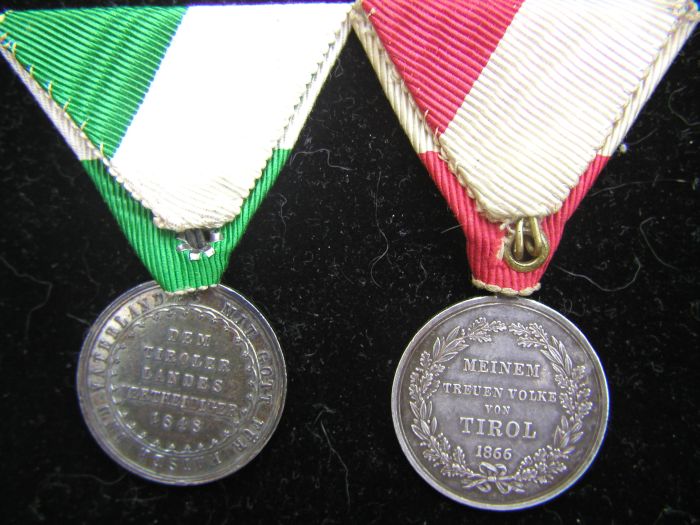
 0
0 -
Below are my 1848 & 1866 Tirol medals.
I was hoping that someone could tell me what the criteria for these were? Any information would be welcome. Also, I know of the first republic Tirol Medal from WWI, and one or two at the end of the 18th century, but were there any others from the 19th century? I want to say I read about one, but I've never seen it and haven't seen any references to it since.
Thanks!
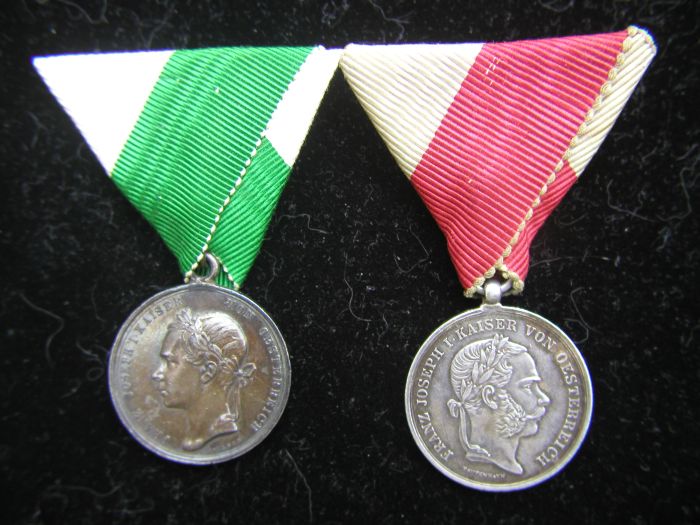
 1
1 -
The public security service medals are very nice, but can anybody explain the symbolism of the three pointed star in the center of these medals? Is there any, or is it an arbitrary symbol? Hopefully I'm not missing some obvious answer...
0 -
If the left portrait is not that of Wilhelm II, what is the meaning of the latter crown?
It is difficult to see from the pictures, but if the crown on the right side of the portraits is the Austrian Crown, then from what I can see the crown on the left bears some passing resemblance to the Hungarian Crown (the Crown of St. Stephen). It is difficult to see whether the cross on top of the crown is completely vertical, or slightly tilted, but there is quite a bit of Austro-Hungarian imagery that emphasized the 'two kingdoms' nature of the empire.
Below is the current crest of Hungary with the Crown of St. Stephen on top for comparison.
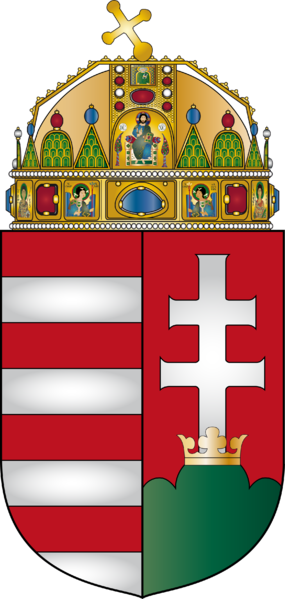

 0
0 -
Mine measures 37.5mm using digital calipers so I assume it started as the 39mm version. I like the antiquated style suspension loop, which appears to me to be an intigral loop of metal hammered flat, but I don't know how they were in practice worn with the ribbons. It is my understanding that the Austrian style Trifold ribbon didn't come into being until the middle of the century?
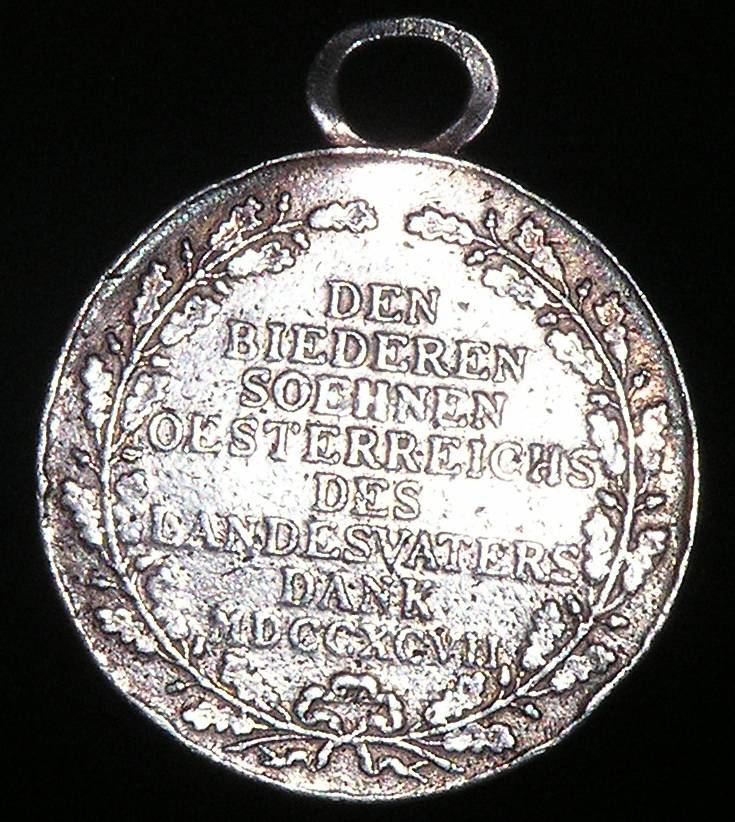
 0
0 -
Gentlemen,
For you Austrian orders and medals 'experten', could you please tell me what this particular medal was awarded for and what its correct ribbon was? Thank you.
Jaybo
I am not an 'experten' by any means but I do have an interest in these medals as I have one. Try this website:
http://www.antiquesatoz.com/napoleon/ausnapms.htm
The following info is taken from that site.
There are two versions and these in turn come in various sizes and metals based on the rank of the reciepient. Both medals look enough alike that I have to read the inscription to figure out which one I am viewing.
Tyrolian Mobilization Medal of 1797
Founded by Emperor Francis in 1797 for those members of the Tyrolian volunteer contingent who served in the keeping the Tyrol free from the French army. Given in large gold, for highest officers, gold for officers and silver for soldiers. The large gold are very rare and the gold ones rare. Suspended from a ribbon through a circular eye. The silver medal is much commoner than that of 1796 so many more Tyrolians must have responded to the mobilization call.
Ribbon: Three black and two gold equal stripes with thin gold edging.

Size: Large gold and silver, 39 mm; small gold 35mm.
Obverse: Profile bust of Francis wearing a laurel wreath and facing right. Circumference inscription: "FRANZ II R. K. ERZH. ZU OEST. GEG. GRAF VON TYROL", and below and smaller the designers name "I. N. WIRT. F.".
Reverse: Within a laurel wreath tied at the bottom, on six lines: "DEN / TAPFERN VERTHEIDIGERN / DES / VATERLANDS / MDCCXCVII".
Lower Austrian Mobilization Medal of 1797
Given to those able bodied men who answered the national emergency mobilization call of Count Saurau in Lower Austria. These troops were formed into free corps called Landesstande. The medal was, on paper, awarded in five types: gold for highest officers, largest silver for officers, large silver for underofficers, silver for soldiers and black cast iron for non-combattants. The iron medal has never been seen and the soldier's silver medal is also unknown and probably not issued. The gold medal, given to Count Saurau, the Duke of Wurttemburg (as commander of the troops) and high district and government officials is very rare. Almost all medals known are the largest and the large silver. Suspended by a ribbon from a circular eye.
Ribbon: Half dark rose half white.

Size: Gold and silver 37 mm, largest silver 41 mm, Large silver and black iron 39mm.
Obverse: Bust of Francis wearing a laurel wreath and facing right. Circumference inscription: "FRANZ II. ROM. KAI. ERZHERZOG ZU OESTERREICH" and smaller on the bottom edge: "I. N. WIRT. F.".
Reverse: Within an oak wreath tied at the bottom, on eight lines: "DEN / BIEDEREN / SOEHNEN / OESTERREICHS / DES / LANESVATERS / DANK / MDCCXCVII".
The following are pictures of my well worn example. Please excuse the flash. I took this before I knew better. Mine, obviously, is the second type and with digital calipers I consistently measure 37.5mm given the wear, I assume that means it used to be the 39mm silver.
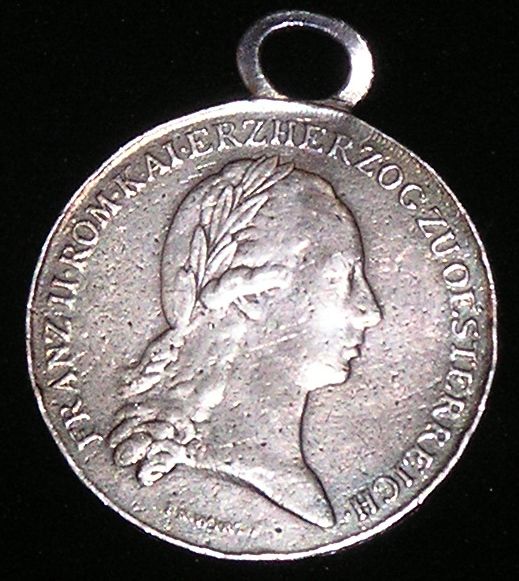
 0
0 -
I think these sorts of things are not uncommon. Generally described as 'I gave gold for iron' campaigns? l've seen lots of German trinkets with that sort of political slogan or idea. I don't think it was always jewlery, but also included medalions, table medals, etc. I just googled 'gold for iron WWI' to see if anything came up and the following site was returned, which appears to be about an exhibit on the subject at the Croatian History Museum in Zagreb, which of course would make it part of an Austro-Hungarian drive.
http://www.hismus.hr/english/current%20exhibition.htm
I don't really know for sure but I don't remember seeing similar campaigns in France, England, or the US, so maybe it was a Central Powers thing? Anyway, if you google the words I mentioned earlier you will get tons of useful links.
0 -
There is a show which I've seen aired on one of the regular cable channels about a dozen times that more or less asks the same question.
They (rightly, IMO) point out that when you look at the Tiger/Pather or even to a much lesser degree the Challenger with its chobham armor, that tanks that are excessively technically difficult in the end ultimately aren't very important/useful.
It doesn't matter how great your tank is if you can only build one and the enemy builds 200. I think it speaks volumes that after world war II, when everybody took a step back and evaluated, that no nation attempted to build uber-tanks using the panther/tiger as philosophical design guides. Nobody (until recently?) tried to build a tank that would be superior to every other tank 1 on 1. Instead, they basically followed the T-34 model to build tanks that struck a balance between complex technical design and production considerations.
I think you also have to consider the FT-17 since it was the first tank to use the standard layout of single main weapon on a turret.
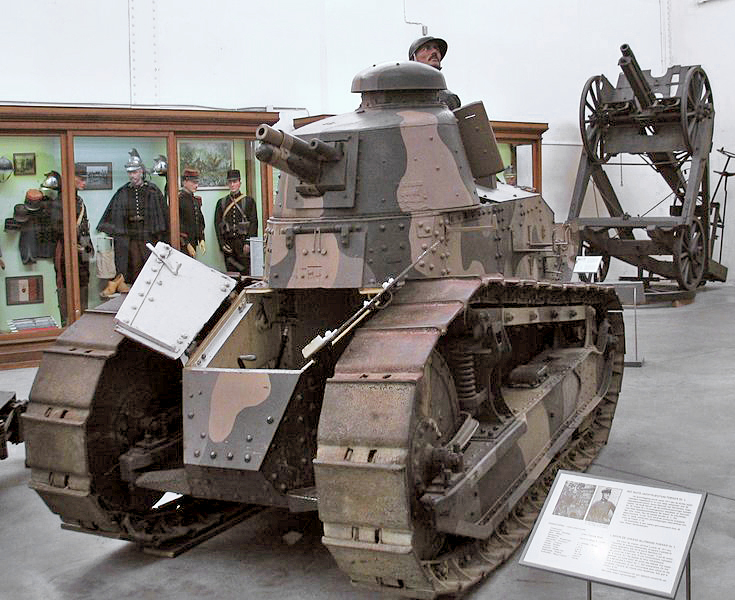 0
0 -
Renaissance Wax is great. I use it on nearly everything I own. The one caveat is that it has a really, really strong smell. It doesn't bother me and I would neither describe it as unpleasant or pleasant, but my wife gets headaches every time I pull it out so I have to use it when she?s not home. Just something to think about.
0 -
Now I am confused. Why would someone make a wearers copy? If someone lost the original, could they have applied for a replacement?
Regards
Paul
I have several 2nd class general honor medals and of them is atypical. The medal is thicker, the strike is slightly different, and it is made of something that rusts.
I posted it somewhere and I believe Andreas of medalnet.net posted in response that it was in fact a genuine 'wearer's copy' and that they were all made of different materials. Because of this I don't think that the idea of a wearer's copy is totally far fetched.
I don't have the experience of some others so I can't really comment on authenticity. But one thing that did stand out to me was the fact that the ribbons in the front of the medal bar have such a dirty, well worn look while the red felt on the back seems to be in perfect condition. I don't know if such a state ever occurs naturally, but it sure would put me off of a medal bar with a combination that might be faked.
0 -
This is probably a long shot and it is perhaps in the wrong place, so please excuse me.
At a recent show I traded a few items and one of the things I got back was a couple of issues of a magazine called Kaiserzeit - The Journal of the Imperial German Military Collector's Association located in New Jersey. The content of these two magazines is wonderful but I want more. An internet search reveals no information.
Do this organization and this periodical still exist? If not what happened to them? The content seems to be the perfect balance between arcane minutia and practical guides; an article on the German temperance movements of the late 19th century sits beside a page on award documents.
If the organization is gone is there any way to get back issues?
Thanks,
Keith
0 -
The statue would lead me to believe that it's in honor of the dedication of a monument to Joseph.
Thanks, you knocked something loose. I remember now that that is exactly what it was supposed to be when I bought it.
Thanks everybody for the responses.
Keith
The bust is done by the usual sculptor 'IN WIRT F" (anybody know what this person's real, full name was?) but it is definately a different portrait of Franz than on my other two Franz medals, though one of them is so eroded that it is difficult to tell.

 0
0 -
I'm sorry. This is slightly older than the 1st World War, but I thought it would get better responses here. I have completely forgotten what this is.
Also, it is as large and heavylike a table medals, but has a loop. If anybody can identify it and it is a worn medal what were the colors of the ribbon?
Thanks,
Keith
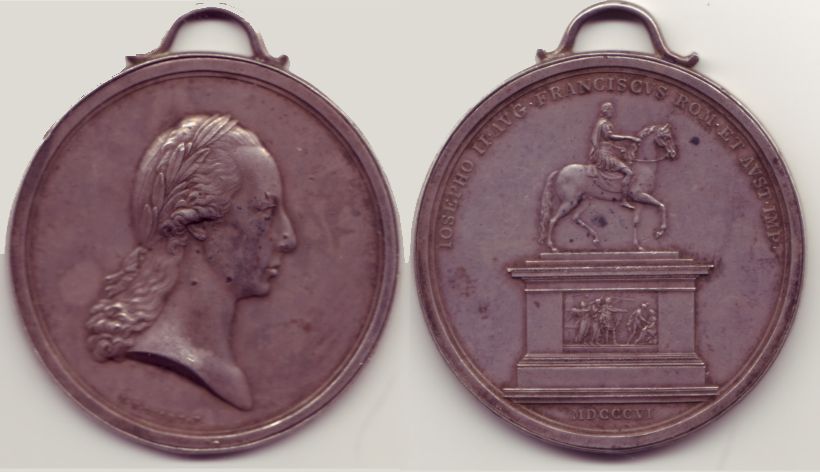

 0
0 -
I apologize if this is off topic, but this subject is becoming very interesting to me.
Can anybody recommend an English language book or other source with a significant section on Hungarian People's Republic awards?
0 -
...
Thank You
0 -
Finally a Order of Merit as posted in a linked thread, though this one is silver
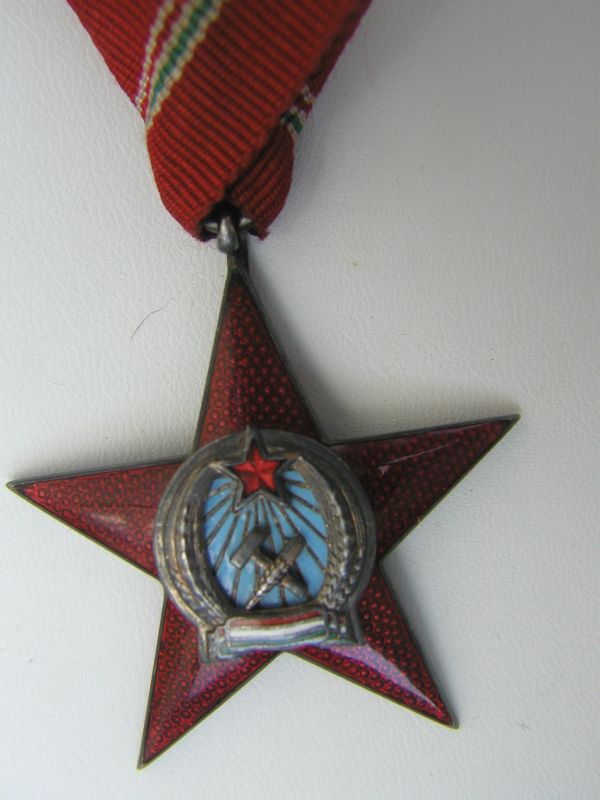




 0
0 -
-


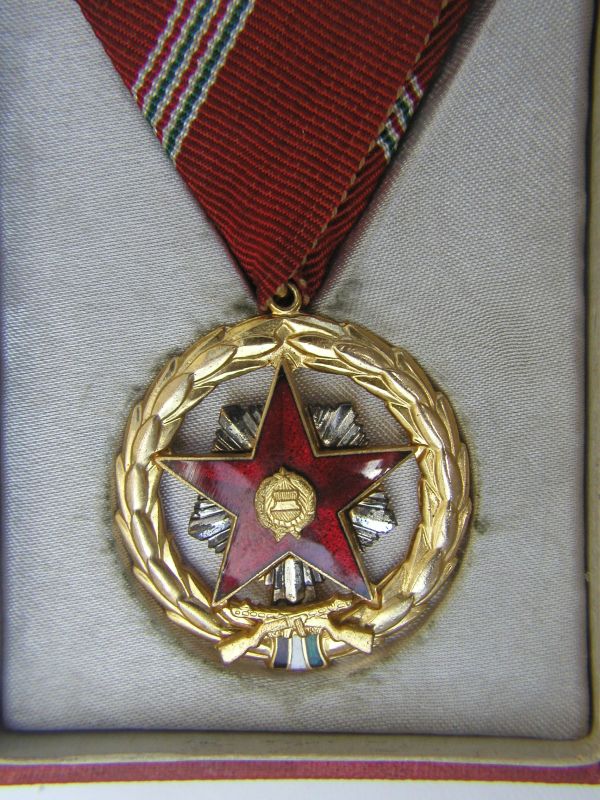

Who am I?
in Germany: Imperial: The Orders, Decorations and Medals of The Imperial German States
Posted
At what point does all that 'bling' become a hindrance to perambulation? I would think it would become difficult to move without damaging something. Or did one only put it all on when sitting in front of the photographer and remove it afterwords?